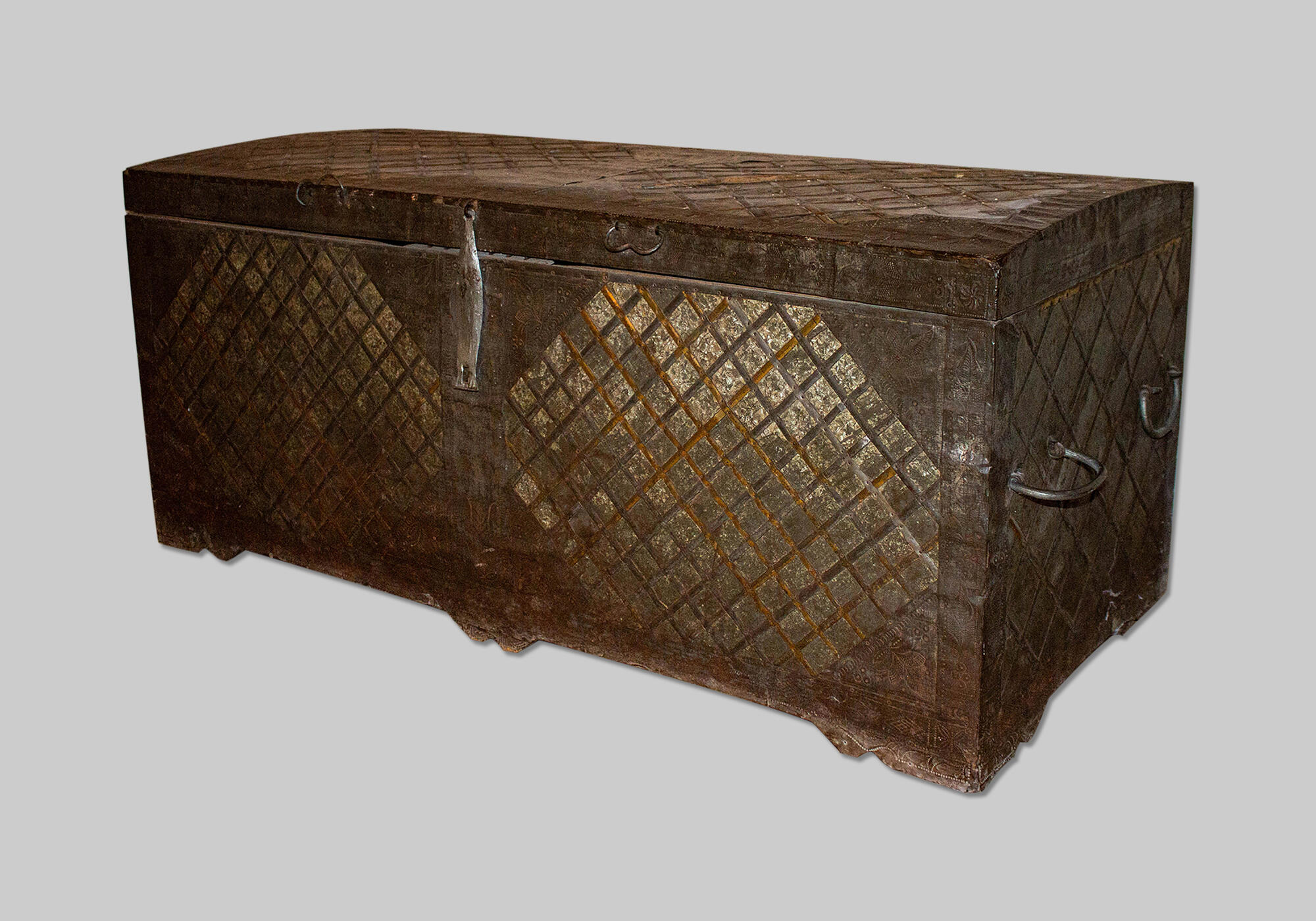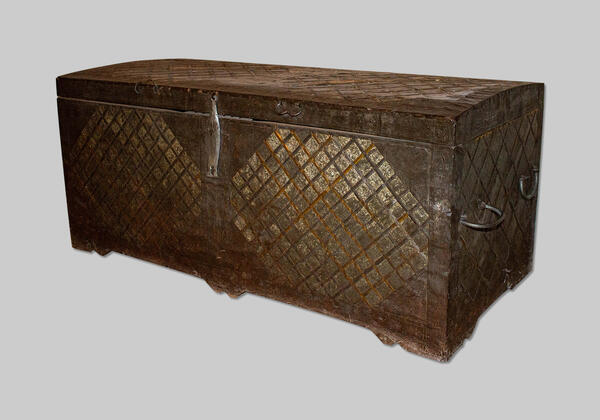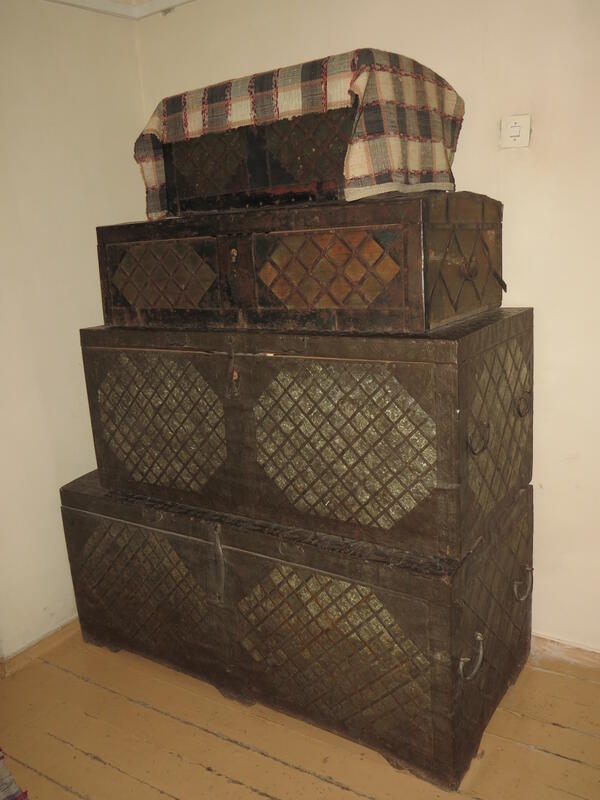In the old days, a chest served as a bed, a wardrobe, and a symbol of the accumulated wealth. Chests were made of oak, beech, or ash; they were banded with metal strips forming a characteristic checkered pattern. There were chests upholstered with rich fabrics and even sealskins.
A chest is mentioned in the novella titled ‘PodlIpovtsy, ’ written by the representative of the democratic literature of the 1860s Fyodor Reshetnikov. This ‘coffer’ ‘contains boots, a mirror, tea, sugar, two chintz shirts, two blue tick robes’ — the wealth acquired by the two sons of a peasant from the village of PodlIpnaya. Brothers PAvel and IvAn managed to escape poverty and became stokers on a steamer. They went to ‘Nizhny Novgorod, Saratov, and Astrakhan, ate apples and watermelons, have matured a great deal, and even know how to read’. The chest signifies a new stage in the life of these characters.
A chest is mentioned in the novella titled ‘PodlIpovtsy, ’ written by the representative of the democratic literature of the 1860s Fyodor Reshetnikov. This ‘coffer’ ‘contains boots, a mirror, tea, sugar, two chintz shirts, two blue tick robes’ — the wealth acquired by the two sons of a peasant from the village of PodlIpnaya. Brothers PAvel and IvAn managed to escape poverty and became stokers on a steamer. They went to ‘Nizhny Novgorod, Saratov, and Astrakhan, ate apples and watermelons, have matured a great deal, and even know how to read’. The chest signifies a new stage in the life of these characters.




